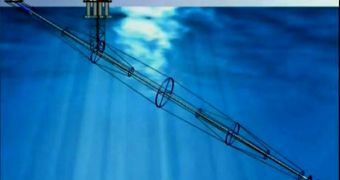According to a former Lawrence Livermore National Laboratory (LANL) expert, it may not be impossible to send cargo to low-Earth orbit (LEO) using a very long and powerful cannon. According to the physicist, a cannon with a barrel about 1.1 kilometers (3,600 feet) long could easily get the job done, at costs far smaller than those associated with sending cargo into orbit aboard rockets. John Hunter estimates that his method could result in an end-cost of $250 per pound of delivered cargo, as opposed to the $5,000-per-pound price tag currently placed on rocket-carried satellites and other experiments, PhysOrg reports.
Hunter believes that the job of the hypothetical cannon could also be made easier if it is constructed near the Equator. The high rotation speed that the Earth has there would ensure that the cargo propelled from the cannon would reach LEO faster and easier than if launched from anywhere else on the planet. Hunter and his colleagues built their initiative on another project they conducted in 1992 while at the LANL. At the time, they fired a 130-meter (425-foot) cannon, which was built to help test hypersonic engines. Its operating principle was based on expanding the barrel via compressed hydrogen gas. A large, methane-driven piston would push on the gas, forcing it into the barrel, and dislodging the projectile.
In their new approach, the researchers replaced methane with natural gas, burning in a combustion chamber. This new system has the ability to increase the temperature of the hydrogen within a special chamber to about 1,430 degrees Celsius (2,600 degrees Fahrenheit). Hunter estimates that such a temperature range would increase the pressure in the gas by more than 500 percent, ensuring that sufficient force is released into the barrel to propel a cargo all the way to LEO. A mechanical operator would then be in charge of closing the barrel of the cannon as soon as the cargo leaves it, as this would ensure that a large portion of the hydrogen fired into it is recycled for another firing procedure.
Speaking this October in Boston, at the Space Investment Summit, the former LANL physicist said that the cannon would be built partially underwater. Some 490 meters (1,600 feet) of the structure would be stabilized with underwater ballast, and Hunter believes that the system could deliver 450 kilograms of payload at a speed of about 13,000 miles per hour. The cargo compartment itself could feature a very small rocket motor that would ensure an extra power boost if needed. The team estimates that the Quicklauncher cannon could be ready in seven years, and that it would cost approximately $500 million to build. Though this is a large sum of money, the long-term saves could more than offset the initial investment.

 14 DAY TRIAL //
14 DAY TRIAL //